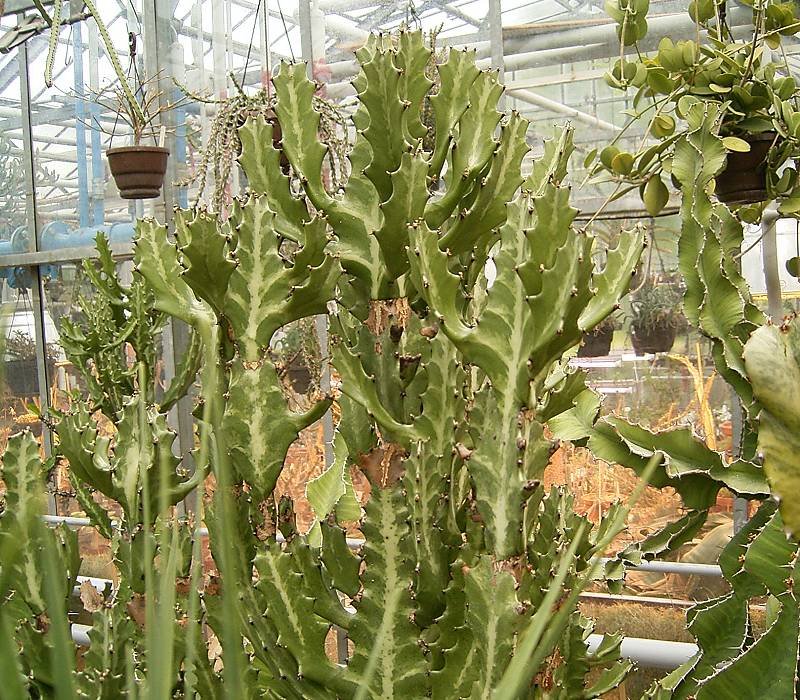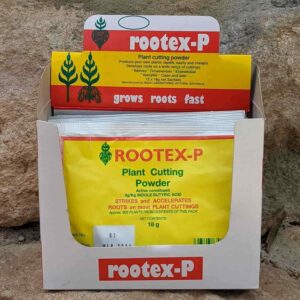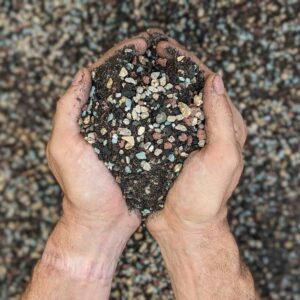Spoiler: It’s not a cactus
Have you heard of the term ‘Cowboy Cactus’? We often get asked if we sell them, but they are often surprised when we tell them that these plants aren’t cacti at all. “Cowboy cactus” is just a common name that has stuck around in horticulture jargon, and depending on who you ask, can refer to a few different species of plants in the Euphorbiaceae plant family.
Read on to find out what people mean when they say “Cowboy Cactus” (as well as our own opinion of what a cowboy cactus really is).
What is a “Cowboy Cactus”?
First of all, let’s define what a ‘cowboy cactus’ isn’t. Despite the name, it isn’t a cactus at all. It’s not even distantly related.
“True cacti” all belong to the plant family Cactaceae.
“Cowboy cactus” on the other hand is used to refer to a succulent plant belonging to the Euphorbiaceae plant family in the genus Euphorbia. Euphorbia is an enormous genus of plants, with some 2000+ species spread all over the world. Whilst many of these plant species are small weed-like plants, there are several large cactus-like Euphorbia species native to Africa and Asia that have picked up the common name ‘cowboy cacti’. These are: Euphorbia ingens, Euphorbia abyssinica and Euphorbia lactea.
From what we can gather/assume, the name “Cowboy Cactus” stems from the fact that they often exhibit the iconic double arms that are reminiscent of the cacti seen in old western/cowboy movies. Something we will touch on later in this article.
Why are there so many different species called Cowboy Cactus?
Because “Cowboy Cactus” is a common name, not a scientific one. Scientific names need to be unique to ensure that researchers are working towards a common understanding. There is a whole field of study dedicated to the naming of living organisms, and if you attempt to publish a scientific article that disputes those established names without any basis as to why the organism should be reclassified it will be dismissed. Common names, on the other hand, can be made up by anyone, at any time, for any reason. From what we can gather, the most commonly referred to as “Cowboy Cactus” is Euphorbia abyssinica. However, let’s pretend you run a plant nursery with thousands of Euphorbia lactea plants in stock and you notice consumer demand for “cowboy cacti”. Well congratulations, with the mark of a pen on the plant label you now have thousands of “Cowboy Cacti” to meet the demand.
This loose naming and doubling-up of name usage between species are two of the reasons we at Cactus Culture Australia encourage our readers & customers to learn and use the scientific names of plants. The other reason is that binomial nomenclature helps you to better understand the relationship between plant species and their evolutionary story. Learning what a Euphorbia is, for example, will mean that whenever you see that word on a plant label you will know the plant you are looking at has no relation whatsoever to the exclusively American plant family Cactaceae (“true” cacti), even if you haven’t seen the species before. If you’re interested in learning more about the topic of taxonomy and binomial nomenclature we wrote a full article about it here.
Euphorbia abyssinica

The species most commonly referred to as a “Cowboy Cactus” is a discinct cultivar of Euphorbia abyssinica which also sometimes goes by the name Desert Candle. This plant is native to Malawi, Mozambique, Zimbabwe, Zambia, Botswana, Tanzania, South Africa, Rwanda, Uganda, Kenya and Eswatini. It’s a huge, spiny, succulent tree that is easy to confuse with a cactus. Visually, they are quite similar in a lot of ways, but one of their major differences is the growth rate. Most cacti are slow growers, with the fastest mature plants putting on 50cm a year in optimal conditions. Euphorbias on the other hand can easily exceed a metre growth per year.
The branches of this plant are considerably smaller in diameter than the Ingens branches but grows in dense thickets of many dozens or even hundreds of branches at full maturity.
We sell Euphorbia abyssinica in our online shop.
Euphorbia Ingens

The next most common “cowboy” culprit is Euphorbia ingens, which also goes by the common names candelabra tree or naboom (see how confusing these common names are). Euphorbia ingens are common and can be found at many nurseries all over Australia (and the world) including our online store. They appeal to homeowners who want a large statement “cactus” but do not want to pay the price tag associated with a plant that took 10 years to get that large.
At Cactus Culture Australia we do not encourage anyone to plant Euphorbia ingens in the ground unless you know exactly how big it’s going to get. Due to the growth rate and size potential (15m+), this plant can easily and quickly become a major problem for many unaware homeowners. If kept potted and indoors the Euphorbia ingens can be a great addition to your decor.
Note: Euphorbia ammaks are just the variegated version of the same plant species.
Euphorbia lactea

This one genuinely surprised us. We hadn’t heard of Euphorbia lactea being referred to as “Cowboy Cactus” until recently. Apparently, their many other common names such as Candelabra Cactus, Dragon Bones, Milkstripe Euphorbia, Mottled Candlestick and Mottled Spurge were not enough, they needed to be called a “Cowboy Cactus” too.
This one isn’t even a desert plant, being native to tropical parts of Asia, primarily India – a far cry from a Cowboy landscape.
All these different types of plants in the Euphorbia genus being called cowboy cactus have led to some confusion and inconsistency in the plant world.
What is a true Cowboy Cactus?

If you ask us, we’re going to tell you that the real “Cowboy Cactus”, the species of plant that brings to mind images of dusty cowboy boots, tumbleweeds and old saloons – is the Saguaro Cactus (Carnegiea gigantea). In all of those old western movies, those giant cacti with unmistakable arms are all Saguaros. These cacti grow exclusively in the Sonoran Desert which stretches from Arizona down into Mexico and they are ridiculously slow growing. Those giants in Arizona are often hundreds of years old and would therefore cost 10’s of thousands of dollars if you can even find them that size in Australia.
This is why people have turned to faster-growing alternatives for their houses, restaurants and photo set props, and why we see so many growers of the aforementioned Euphorbia species trying to market them as “cowboy cactus”.
“A society grows great when old men plant trees whose shade they know they shall never sit in.”



